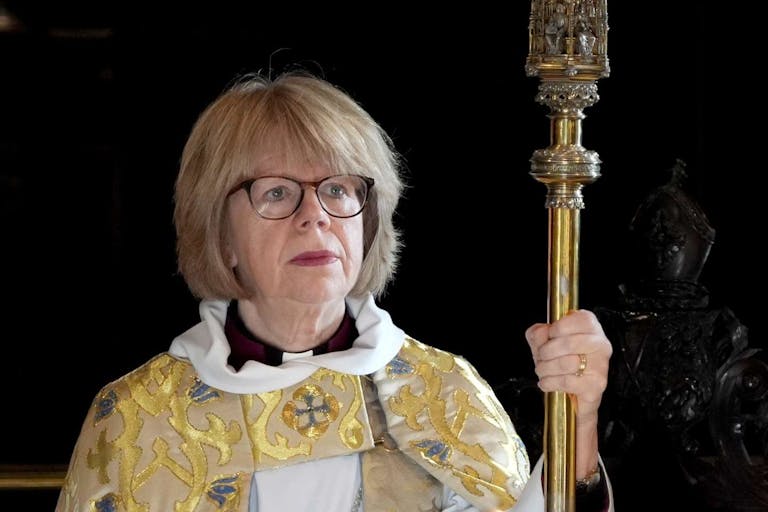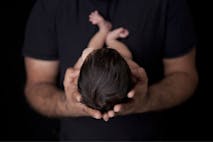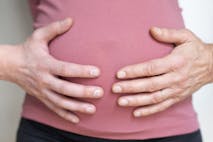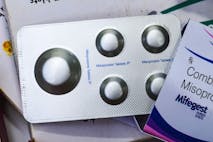
New Archbishop of Canterbury warns of danger in legalizing assisted suicide
Nancy Flanders
·
Fact checking the fact checkers regarding Lila Rose’s Trisomy 18 social media post
Independent fact checker FactCheck.org has accused Live Action president and founder Lila Rose of sharing information on her Instagram account that “could mislead people.” The post concerns Trisomy 18 and the case of Kate Cox, the Texas woman who filed a lawsuit against the state asking for permission to abort her daughter who had been diagnosed with the condition.
However, one of the issues with FactCheck.org’s assessment stems from the fact that the fact checker used decades-old research to make false claims against Rose’s post, while Rose used more recent, up-to-date medical data.
Trisomy 18 survival with medical care
Rose’s Instagram post shares the research-backed statistic that 90% of children born with Trisomy 18 can survive when given proper medical care. But FactCheck.org disagreed, writing: “According to studies, the median survival time for the condition among babies born alive was four to 14.5 days, and just 5.6% to 8.4% of those born alive lived to their 1st birthday.”
The studies cited here, however, date back to 2003 and 2005 which used data on survival rates of Trisomy 18 from as far back as the “late 1960s.”
The 2003 study referenced by the fact checker utilized data regarding children born between 1968 and 1999. A lot has changed since then.
The other outdated study used by the fact checker was from 2005. It said that babies with Trisomy 18 only live to a median age of four days, and that just 6% were alive after a year. That data came from children born as far back as 1964 and only as recently as 2003. The most recent case is 20 years old.
Both of the studies cited as evidence against Rose are based on data that is 20-59 years old. The fact checker failed to utilize the more recent data that Rose used, including the argument from the Support Organization for Trisomy (SOFT) that Trisomy 18 should no longer be labeled “incompatible with life” but “life-limiting.” Children with the condition are not necessarily destined to die at birth when doctors treat their health concerns just as they would treat a child without Trisomy 18.
Here is the updated research that FactCheck.org failed to reference.
In a study published in 2017 in Pediatrics, Dr. Thomas Collins and his colleagues from the University of Arkansas for Medical Sciences showed that heart surgery can more than double the life spans of babies with Trisomy 18, as well as those with Trisomy 13. Heart surgery increased survival and hospital discharge from 33% to 67%, and that benefit lasted two years. This study used data from 1,600 patients between 2004 and 2015 who had either Trisomy 13 or Trisomy 18.
In addition, research published in 2019 looked at data from patients in the Society of Thoracic Surgeons Congenital Heart Surgery Database with Trisomy 13 and Trisomy 18 who underwent cardiac surgery between 2010 and 2017. This more recent research shows that the situation is as Rose stated — when given proper medical care, such as life-saving complete heart repair surgery, newborns with Trisomy 18 have a 90% discharge rate. For children in the study who underwent palliative surgeries, 93% survived to discharge.
The Detroit Free Press recently reported on research out of the University of Michigan’s Mott Children’s Hospital stating that by “taking an aggressive approach to treatment, 90% of babies born with Edwards syndrome can go home from the hospital, and their five-year survival rate can reach close to 77%.”
The research does not claim that these children had or will have a typical lifespan, and neither does Rose. But it does prove that children with Trisomy 18 can go home from the hospital and they may survive even for years, which is exactly what Rose is arguing. FactCheck.org ignored all of this data.
Factors particular to Cox’s case
The fact checker also said that Rose failed to “mention the factors particular to Cox’s case. Her petition stated that ultrasounds showed multiple abnormalities affecting the pregnancy, adding that her specialist doctor told Cox and her family that ‘given the results of the ultrasound alone, their baby was likely to pass in utero, be stillborn, or only live for a week at most.'”
Dr. Jeffrey Wright, a maternal-fetal medicine specialist (MFM), told Live Action News, “All newborns require care. In all cases, how much care is provided can greatly affect survival chances. A newborn with Trisomy 18, in order to survive, often requires care that a healthy child would not require. … [I]t is of course not possible to truly accurately determine what will actually happen. More importantly, none of that changes the fact that all unborn children are fully human and deserve to be treated with care and dignity. They are endowed by their creator with inalienable rights.”
Like Cox, other parents of children with Trisomy 18 have been told that their child would die in utero or at birth. Phil and Elisabeth Scott were told their daughter Brianna would die at birth, but that if she managed to survive, she would essentially have no function. She wouldn’t smile, interact, or remember who her parents were. But none of this proved to be true. And interestingly enough, Elisabeth — like Kate Cox — already had two previous C-sections before her pregnancy with Brianna.
Doctors can make predictions, but those predictions can be wrong. Other families of people with Trisomy 18 have testified to this. Ron and Sara Hayes were told their daughter Megan would not survive infancy, but in 2020, she celebrated her 40th birthday (yes, 40th) with Trisomy 18.
Dr. Martin McCaffrey, a board-certified neonatologist who is dedicated to helping children with Trisomy 18, explained, “These are medically complex children… but I think what is really critical… is that what we need to be talking to parents about is transparently and openly the potential for life for these children — and that is not generally happening. We know that through the literature, and I know it through extensive anecdotal experience that I have in counseling families. And the literature that has been published … suggests one really concerning fact: The factor most associated with the chance that a baby will die in the hospital with Trisomy 18 is a prenatal diagnosis” (emphasis added).
Dr. McCaffrey explained that a 2013 study out of Canada showed that when the Trisomy 18 diagnosis is made before birth and the family refuses abortion, doctors will offer “comfort care” for the baby at birth — which McCaffrey says “consists of … mainly warmth, narcotics, and bereavement support.” However, when a child is diagnosed after birth with Trisomy 18, that diagnosis is not made for several days. As the doctors await a diagnosis, the child is receiving medical interventions that she may not have been given if she had received a prenatal diagnosis. The rate of survival to hospital discharge, according to McCaffrey, is therefore higher in babies who are diagnosed after birth as opposed to before birth — largely based on the attitudes of doctors and other medical staff.
Research from 2022 noted, “Historically, invasive medical interventions were considered futile by many, and a comfort care approach was the only option presented to families.” Today, interventions can be made, though OB/GYNs or MFMs may not refer the parents to the pediatric doctors who would provide those interventions.
This study looked at data from children born between January 1, 2012, and December 31, 2018, and found, “In this cohort, fewer than one-half of families met with a pediatric provider or multidisciplinary fetal care team during their pregnancy. We hypothesize that the association between prenatal consultation with pediatric providers and lower termination rates (but a lack of an association between prenatal counseling and postnatal survival) reflects referral selection bias. Families are making initial decisions about goals of care before meeting with pediatric care providers. Whether these decisions are based on counseling from their primary obstetrician, maternal-fetal medicine specialists, their personal views, or perspectives obtained from their family and community support remains unknown. Similarly, we speculate that our observation that prenatal consultation with a fetal cardiologist is associated with increased survival may be the result of referral bias. Families motivated to pursue invasive interventions are being referred at higher rates.”
Essentially, the researchers believe parents are less likely to abort their baby with Trisomy 18 or provide only comfort care at birth if they meet with pediatric providers during pregnancy rather than just their OB/GYN or MFM, but that some OB/GYNs or MFMs may fail to refer parents to those providers (such as pediatric cardiologist) because of the underlying Trisomy 18 diagnosis — unless the parents specifically request the referral.
It’s true that some children will die in utero or in infancy from complications associated with Trisomy 18. They are also more susceptible to life-threatening issues when they catch something as simple as a cold virus, which can require hospitalization and may lead to death. However, improvements in treatments are helping children to live longer and survive these setbacks.
Risks of abortion vs. C-section
FactCheck.org also claims that Rose “misrepresented the risks of abortion versus continuing the pregnancy…” But Rose never said continuing the pregnancy was safer; she stated, “The claim that abortion is the safest option for Kate is false.”
Cox had specifically requested a D&E abortion. Unfortunately, only about half of all U.S. states are required to report complications arising from abortions, so there are no solid statistics on how many women are injured by abortion. However, abortionists have stated that the D&E procedure is much more complicated than earlier abortions. In a D&E abortion, which Cox considered to be the “best” option for her daughter, the baby is dismembered, and her skull is crushed. For the mother, there can be serious risks.
“Everything is more difficult in a second trimester abortion… In these procedures, the risk of serious complications increases … [because] in a second trimester abortion I have to evacuate her uterus differently,” said abortionist Willie Parker. He added that in a D&E, there is “a higher chance of perforating the uterine wall with the forceps or doing damage to an adjacent organ, and a higher risk of leaving some part of the pregnancy behind: part of the placenta can get stuck on scar tissue from a cesarean for example.”

Kate Cox had undergone two previous C-sections.
Pro-life watchdog group Operation Rescue has documented multiple injuries to women undergoing D&E dismemberment abortions, including hemorrhage, perforations, and other serious and sometimes life-threatening complications. Abortionist LeRoy Carhart horrifically injured two patients within days of each other in 2020, sending them both to the hospital where they had to undergo surgery to repair the damage to their bodies. Parts of their babies had been shoved through holes that Carhart punctured in their uteruses. One woman required a hysterectomy. The other received a colostomy with an external bag due to the severity of her injuries.
A D&E is not the “safest” option for any woman.
C-section vs. induced labor
The fact checker states that if Cox’s baby’s heart stopped beating (stillbirth) she would have to undergo a labor induction to deliver her stillborn baby. “For people like Cox who have had prior C-sections, induction is associated with elevated risk of uterine rupture, which can lead to complications including removal of uterus, excessive bleeding and death,” wrote the fact checker.
MFM specialist Dr. Wright told Live Action News that every type of abortion is a procedure that “has risks that are similar to that of natural labor.” If labor was risky for Cox, so was abortion.
“If the baby reached term,” the fact checker continued, “the petition said, Cox would receive a C-section. Trisomy 18 comes with an increased risk of C-section. … C-sections come with risks to the mother and her future pregnancies.”
The fact checker claims an induction labor was too dangerous for Cox while then claiming that a C-section was also too risky for Cox. The fact checker appears to be attempting to ensure induced abortion is perceived to be the best option. And yet, these were (and are) risks Cox was willing to take for a healthy baby.
If her baby did not have Trisomy 18, Cox would have continued the pregnancy with the same risks of gestational diabetes, high blood pressure, and likely a third C-section. This makes Rose’s statement that Cox “does not want to go through labor or c-section for a disabled baby” accurate, despite FactCheck.org’s claim that it wasn’t. The meaning here appears to have been lost on the fact checker. If Cox’s baby were healthy, she would be willing to go through labor or a C-section. Because her child had been diagnosed with a disability, she was not willing. (Whether or not a child with a disability survives changes nothing about the fact that the child has a disability.) And FactCheck.org said as much, stating that “many women who continue a pregnancy with Trisomy 18 will end up needing a caesarean section, with all the associated risks for the mother and her future pregnancies,” and its selected medical expert stating, “If we look at this way, we are increasing the risk to the mom with having no good outcomes for baby.”
As previously stated, new data shows that children with Trisomy 18 have a chance of survival. If they do survive, they would likely live with some sort of disability. But apparently, according to discriminatory and ableist logic cloaked in the language of health care, survival cannot be considered a “good outcome” if a child has such a disability.
No ‘imminent risk’ to Cox’s life
According to the fact-checkers, Cox’s petition admits that she was at high risk for gestational diabetes, high blood pressure, and other complications. Her petition also states that her life was “not… imminently at risk” and she was not yet suffering from any of those feared potential complications. Regardless, as board-certified Texas-based OB/GYN Dr. Ingrid Skop explained, “Nowhere in [The Texas Human Life Protection Act] law is a requirement that the threat be immediate” in order to legally allow an abortion. (Though an induced abortion targeting the preborn child for death is not medically necessary).
Dr. Wright explained, “All pregnancies involve some risk of gestational diabetes and preeclampsia. Trisomy 18 does not affect that in a substantial way. Not being pregnant would reduce those risks. But that doesn’t change the reality [that all unborn children are fully human and deserve to be treated with care and dignity]. Further, risks of GDM [gestational diabetes] primarily involve fetal harm, not maternal. If a patient is properly monitored, preeclampsia is typically found in an early phase and delivery can be accomplished then in an ethical and moral manner.”
A doctor’s opinion
Speaking of that previously mentioned medical expert — the fact checker sought the opinion of pro-abortion Dr. Alireza Shamshirsaz, a maternal-fetal medicine specialist. Shamshirsaz was previously featured in an article in The Guardian regarding his decision to leave Texas because of the state’s pro-life laws.
He told The Guardian about a couple that was expecting twins and was dealing with Twin to Twin Transfusion Syndrome (TTTS), a serious condition in which blood from one twin is transferred to the other twin, putting both lives at risk. The woman was 21 weeks pregnant and Shamshirsaz wanted to abort one of the twins by stopping the blood flow to that twin, but, he said, the law wouldn’t allow him.
Shamshirsaz makes it appear as though a selective abortion of one twin was the only option, yet, according to Johns Hopkins, in “complicated cases of TTTS, minimally invasive surgery can offer the best chance of having two healthy babies.” The surgery is performed in utero and can correct the blood-sharing imbalance, hopefully allowing both babies to live.
Shamshirsaz is a member of the pro-abortion American College of Obstetricians and Gynecologists. In the Guardian article, he is quoted as saying, “If you can’t do a termination [abortion], who will support these kids after the birth? Who will pay the bills they will need for medical care? Nobody. We destroy these families.” In other words, Shamshirsaz has a clear bias in favor of killing preborn children who will likely need extra “support” after birth (like children with Trisomy 18, for instance) — and for him, death appears to be the ‘solution.’
In opposition to this view, the American Association of Pro-Life Obstetricians and Gynecologists (AAPLOG) has said that “[A]bortion treats no disease process and carries significant potential harm for women,” adding that “The evidence is clear that abortions increase the risk of preterm delivery in future pregnancies, increase a woman’s risk of mental health disorders and suicide and increase her risk of breast cancer if she has not yet had a full-term pregnancy. These risks, and the risks of her dying from abortion related complications, are even higher if the abortion is done in the second trimester and beyond. Our patients deserve better.”
Dr. Wright shared, “I have seen many babies with Trisomy 18… in over three decades of practice. … My observation has been that actively ending the pregnancy does not lessen parents’ grief. It does not guarantee that things will go well physically either. I have seen on many occasions patients regretting their decisions in those cases where they opted to actively end the pregnancy. On the other hand, I have also observed, many many times, parents enjoying and cherishing their shortened time with their children, both before and after birth.”
He added, “With proper prenatal care, recognition of complications, and proper management, those pregnancies have not resulted in serious physical harm to the mother. Of paramount importance, I have not seen patients regret a decision to continue a pregnancy knowing the baby had a Trisomy 18, or any other severe birth defect.”
Editor’s Note 12/24/2023: This article was updated to include information from a 2022 study on Trisomy 13 and Trisomy 18.
Editor's note 12/31/2025: This article originally stated that since 2019, Trisomy 18 was no longer considered incompatible with life. Rather, it was the opinion of the Support Organization for Trisomy that Trisomy 18 should no longer be considered incompatible with life based on the recent data.
Live Action News is pro-life news and commentary from a pro-life perspective.
Contact editor@liveaction.org for questions, corrections, or if you are seeking permission to reprint any Live Action News content.
Guest Articles: To submit a guest article to Live Action News, email editor@liveaction.org with an attached Word document of 800-1000 words. Please also attach any photos relevant to your submission if applicable. If your submission is accepted for publication, you will be notified within three weeks. Guest articles are not compensated (see our Open License Agreement). Thank you for your interest in Live Action News!

Nancy Flanders
·
Analysis
Cassy Cooke
·
Analysis
Nancy Flanders
·
Newsbreak
Angeline Tan
·
Human Interest
Nancy Flanders
·
Issues
Nancy Flanders
·
Politics
Nancy Flanders
·
Politics
Nancy Flanders
·
Abortion Pill
Nancy Flanders
·
Politics
Nancy Flanders
·
Human Interest
Nancy Flanders
·